
Captivating Downtown Los Angeles: The Heartbeat of the City
Discover Downtown Los Angeles: A dynamic fusion of history, culture, and modernity, offering a unique experience with its museums, historic sites, culinary delights, and vibrant nightlife.
Downtown Los Angeles (DTLA) is a vibrant blend of culture, history, and modernity, making it a must-visit destination for tourists. This bustling neighborhood is home to iconic landmarks, world-class museums, and a thriving arts scene. From the towering skyscrapers to the historic theaters, DTLA is a place where the old meets the new in perfect harmony. Stroll through the streets and you'll discover the rich history of Los Angeles, with beautifully restored buildings from the early 20th century juxtaposed against contemporary architectural marvels. The Historic Core offers a glimpse into the past with its stunning Beaux-Arts and Art Deco structures, while the Financial District showcases the city’s economic prowess with its sleek, modern high-rises. Art lovers will find themselves in paradise with the Broad Museum, the Museum of Contemporary Art (MOCA), and the Walt Disney Concert Hall, all situated within walking distance. The Arts District, a short drive away, is a haven for street art and galleries. Foodies will be delighted by the diverse culinary offerings, from upscale dining at Michelin-starred restaurants to mouth-watering street food at Grand Central Market. Shopping enthusiasts can explore the Fashion District for trendy finds or the Jewelry District for dazzling gems. For a taste of local culture, visit Olvera Street, the birthplace of Los Angeles, where you can experience traditional Mexican food, music, and crafts. Nightlife in DTLA is equally impressive, with rooftop bars, chic lounges, and historic theaters hosting live performances and events.
Local tips in Downtown Los Angeles
- Wear comfortable shoes as DTLA is best explored on foot.
- Visit Grand Central Market for a variety of delicious and affordable food options.
- Check the schedule at the Walt Disney Concert Hall for world-class performances.
- Consider using public transport or ride-sharing services to avoid parking hassles.
- Explore the Arts District for amazing street art and local galleries.
Captivating Downtown Los Angeles: The Heartbeat of the City
Downtown Los Angeles (DTLA) is a vibrant blend of culture, history, and modernity, making it a must-visit destination for tourists. This bustling neighborhood is home to iconic landmarks, world-class museums, and a thriving arts scene. From the towering skyscrapers to the historic theaters, DTLA is a place where the old meets the new in perfect harmony. Stroll through the streets and you'll discover the rich history of Los Angeles, with beautifully restored buildings from the early 20th century juxtaposed against contemporary architectural marvels. The Historic Core offers a glimpse into the past with its stunning Beaux-Arts and Art Deco structures, while the Financial District showcases the city’s economic prowess with its sleek, modern high-rises. Art lovers will find themselves in paradise with the Broad Museum, the Museum of Contemporary Art (MOCA), and the Walt Disney Concert Hall, all situated within walking distance. The Arts District, a short drive away, is a haven for street art and galleries. Foodies will be delighted by the diverse culinary offerings, from upscale dining at Michelin-starred restaurants to mouth-watering street food at Grand Central Market. Shopping enthusiasts can explore the Fashion District for trendy finds or the Jewelry District for dazzling gems. For a taste of local culture, visit Olvera Street, the birthplace of Los Angeles, where you can experience traditional Mexican food, music, and crafts. Nightlife in DTLA is equally impressive, with rooftop bars, chic lounges, and historic theaters hosting live performances and events.
Iconic landmarks you can’t miss
Bradbury Building
Experience the beauty and history of the Bradbury Building, a stunning architectural landmark in the heart of Los Angeles, California.
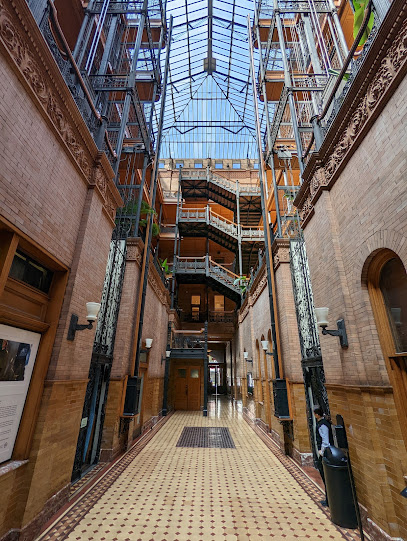
El Pueblo de Los Angeles Historical Monument
Discover the vibrant cultural heritage at El Pueblo de Los Angeles Historical Monument, a unique blend of history, art, and community in Downtown LA.
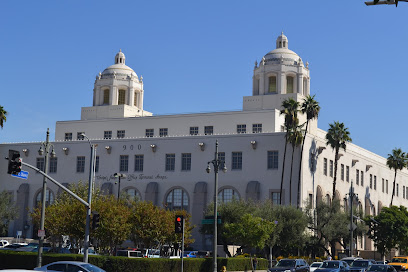
Pico House
Discover the historical charm of Pico House in Downtown Los Angeles, a stunning landmark that tells the story of the city's vibrant past.
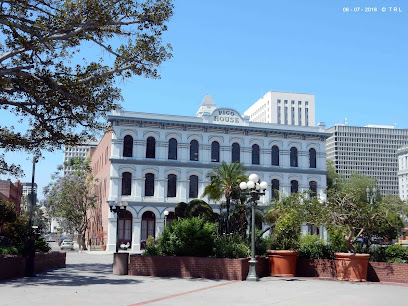
INDIAN ALLEY
Explore Indian Alley, a vibrant historical landmark in Los Angeles that showcases Indigenous art and culture in a captivating outdoor gallery.
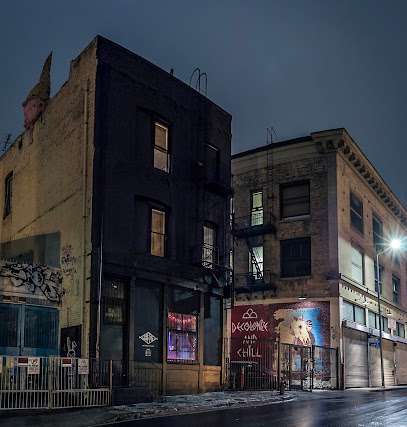
Historic Broadway
Explore the stunning architectural beauty and vibrant culture of Historic Broadway in Downtown Los Angeles, a true gem for every tourist.
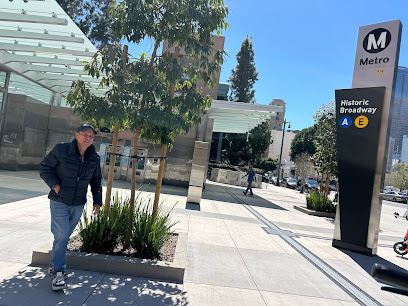
Court of Historic American Flags
Explore the Court of Historic American Flags in Little Tokyo, Los Angeles - A breathtaking tribute to America's rich history and spirit of patriotism.
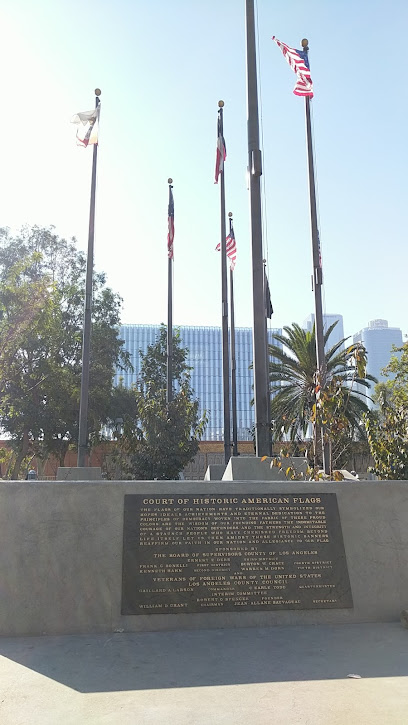
Roundhouse Bridge at LA State Historic Park
Explore the historical significance and serene beauty of Roundhouse Bridge at LA State Historic Park, a cultural gem in Los Angeles.
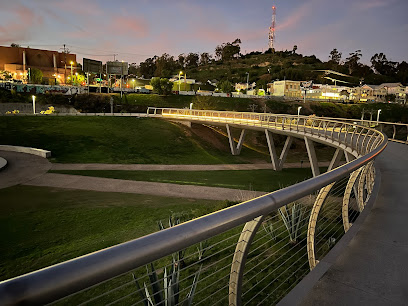
World Peace Bell
Discover the World Peace Bell in Los Angeles' Financial District, a historic landmark symbolizing hope and unity amidst the city's vibrant culture.
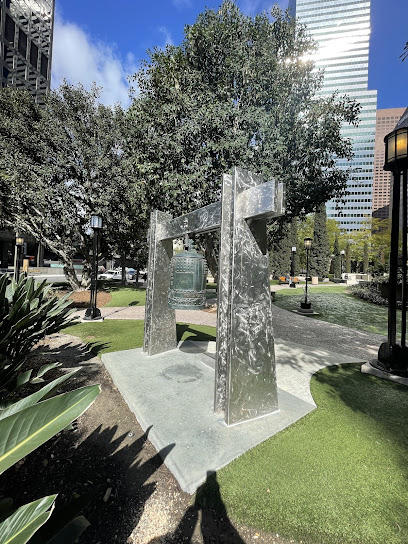
City of Los Angeles Bicentennial Historical Plaque
Discover the City of Los Angeles Bicentennial Historical Plaque, a key historical landmark celebrating the rich heritage of this iconic city.
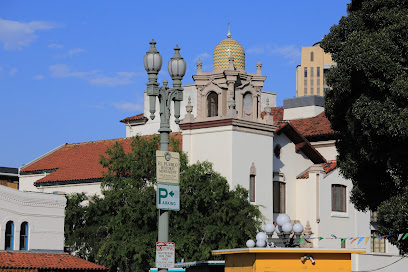
Unmissable attractions to see
The Broad
Explore The Broad, a modern art museum in Downtown Los Angeles, showcasing a remarkable collection of contemporary art and unique exhibitions.
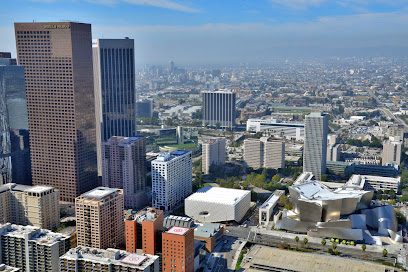
Angels Flight Railway
Experience the historic charm of Angels Flight Railway, the shortest railway in the world, and enjoy breathtaking views of downtown Los Angeles.
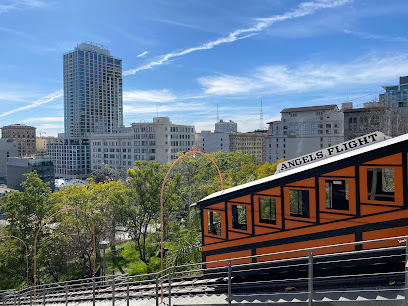
Downtown Los Angeles Art Walk
Discover the heartbeat of Los Angeles' art scene at the Downtown Art Walk, where creativity and community thrive every second Thursday of the month.
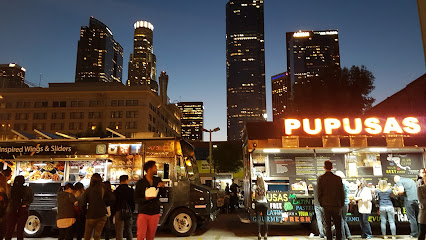
Arthur J. Will Memorial Fountain
Discover the serene beauty of Arthur J. Will Memorial Fountain in Little Tokyo, Los Angeles, where tranquility meets rich cultural heritage.
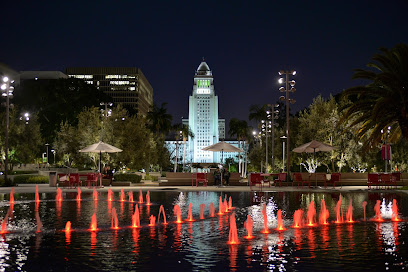
Kyoto Garden
Explore Kyoto Garden, an urban oasis in Los Angeles offering tranquility, stunning Japanese landscapes, and a peaceful retreat amidst the bustling city life.
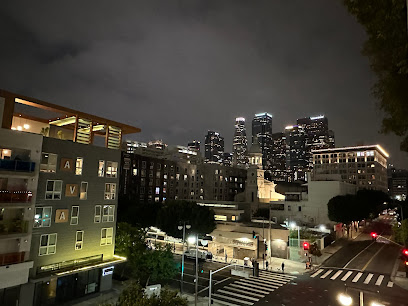
City National Plaza Fountain
Discover tranquility at the City National Plaza Fountain, a stunning oasis of art and nature in Los Angeles' bustling Financial District.
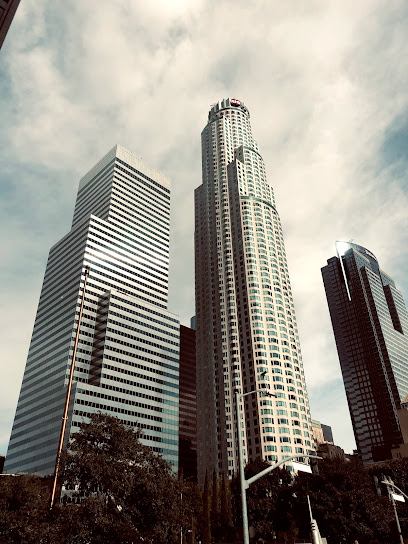
DTLA Arts District
Explore the artistic soul of Los Angeles at the DTLA Arts District, where vibrant murals, eclectic eateries, and unique boutiques await.
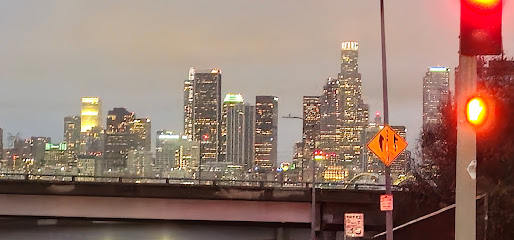
Scavenger Hunt Walking Tours - Los Angeles Union Station
Explore Los Angeles Union Station through engaging scavenger hunts, uncovering the rich history and stunning architecture of this iconic landmark.
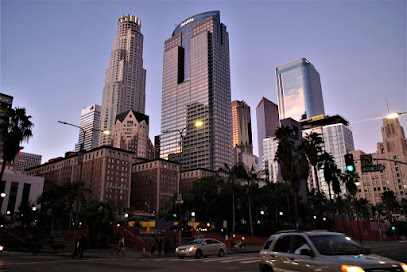
Street Art
Discover the vibrant street art scene of Downtown Los Angeles, where urban creativity meets cultural expression in stunning murals and installations.
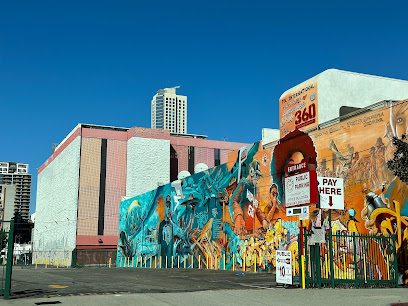
Essential places to dine
Bottega Louie
Experience the culinary artistry of Bottega Louie in downtown LA – where Italian flavors meet vibrant ambiance.
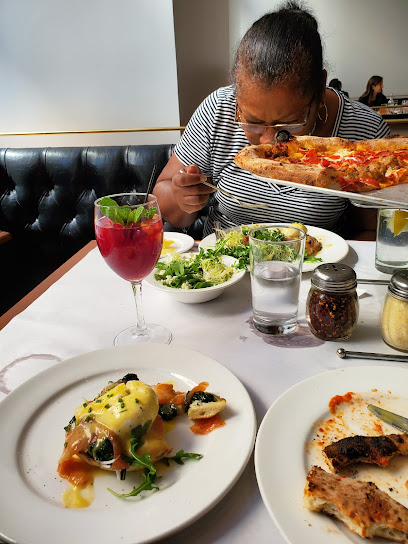
Perch
Experience the elegance of French dining at Perch in Los Angeles—where culinary artistry meets breathtaking views.
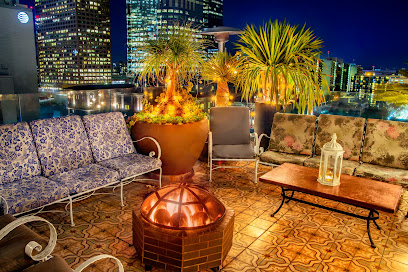
71Above
Experience exquisite dining at 71Above with stunning panoramic views of Los Angeles from the 71st floor.
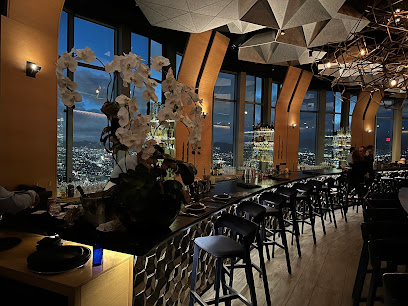
Redbird
Experience exquisite New American cuisine at Redbird in Downtown Los Angeles—where culinary artistry meets vibrant ambiance.
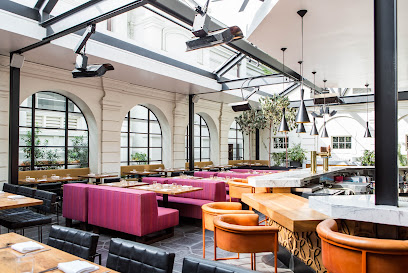
Girl & the Goat Los Angeles
Discover innovative New American cuisine at Girl & the Goat in Los Angeles' vibrant Arts District, where every dish tells a story.
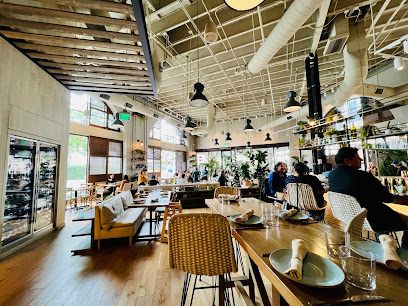
The Factory Kitchen
Experience authentic Italian cuisine at The Factory Kitchen in Los Angeles' Arts District – where tradition meets modern culinary artistry.

Le Petit Paris
Discover modern French cuisine at Le Petit Paris in Los Angeles - an elegant dining experience awaits with exquisite dishes and fine wines.
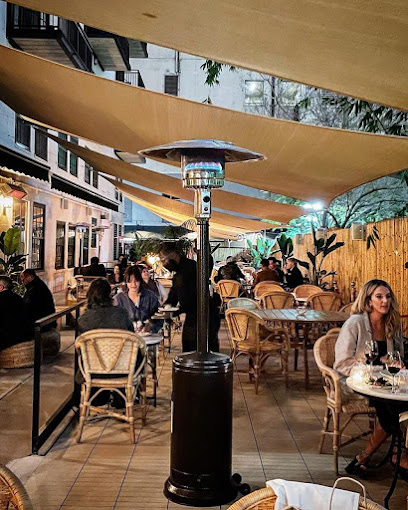
Drago Centro
Experience authentic Italian cuisine in an elegant setting at Drago Centro, Los Angeles' premier dining destination for food enthusiasts.
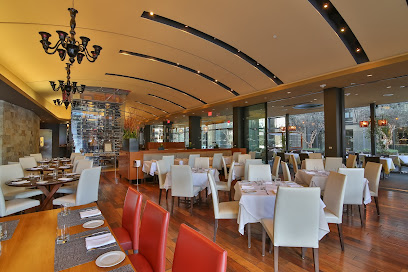
The Exchange Restaurant
Discover delicious Californian cuisine at The Exchange Restaurant in downtown Los Angeles – where fresh ingredients meet vibrant flavors.
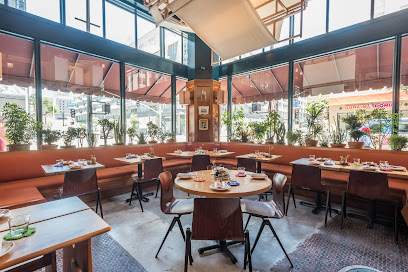
Sparrow Italia Los Angeles
Experience authentic Italian and Mediterranean cuisine at Sparrow Italia, where elegant dining meets vibrant ambiance in South Park, Los Angeles.
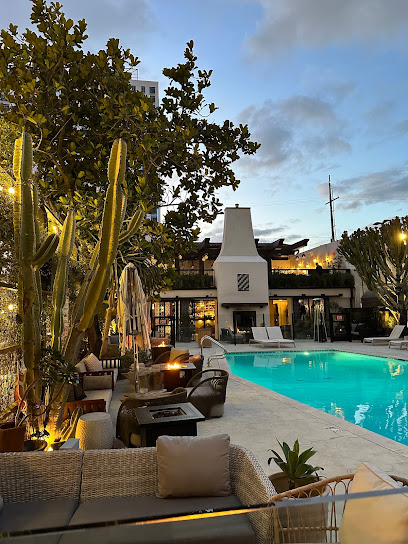
Markets, malls and hidden boutiques
Ginza-USA Gifts & Music
Explore a unique blend of Japanese collectibles, musical instruments, and vintage records at Ginza-USA Gifts & Music in Little Tokyo.
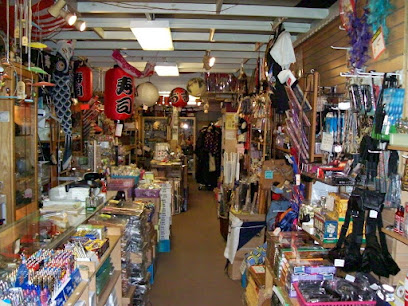
Bunkado
Discover unique gifts and traditional Japanese crafts at Bunkado in the heart of Little Tokyo, a perfect stop for every traveler seeking a cultural experience.
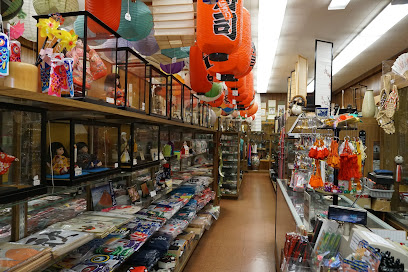
Space City Vintage
Uncover vintage gems and eclectic finds at Space City Vintage in the heart of Little Tokyo, Los Angeles.
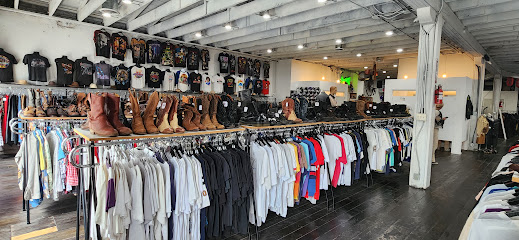
Alchemy Works
Explore the artsy Alchemy Works boutique in Los Angeles, a treasure trove of unique artisanal products and eclectic home decor.
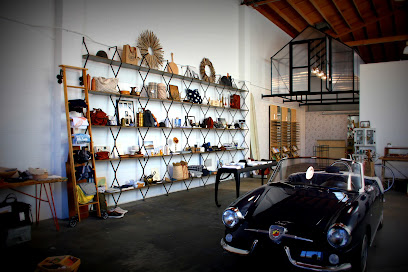
Raggedy Threads
Explore the charm of vintage fashion at Raggedy Threads in Little Tokyo, Los Angeles, where unique treasures await every fashion enthusiast.
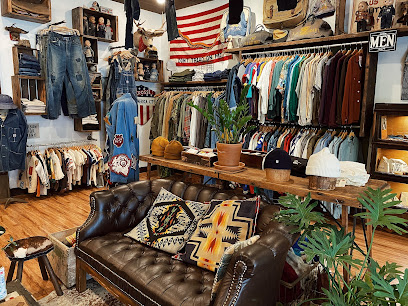
The House of Woo
Discover a treasure trove of unique gifts and local creations at The House of Woo in Los Angeles' Arts District.
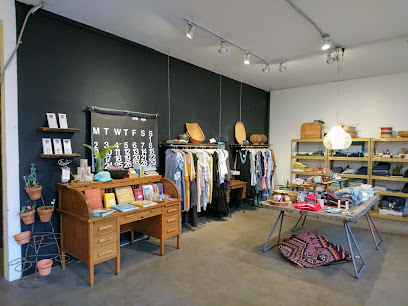
Alvarado Clothing
Discover your unique style at Alvarado Clothing in LA's Historic Core, where fashion meets the vibrant culture of the city.
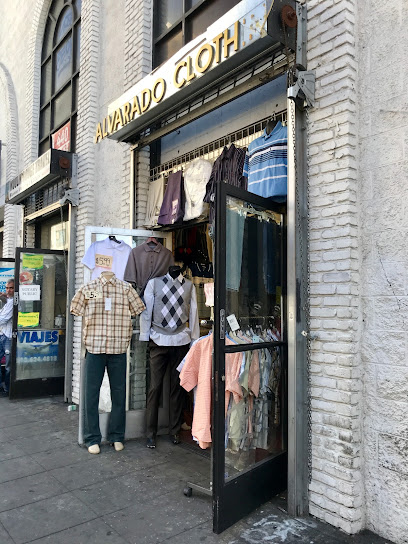
NICO & BULLITT
Discover the unique charm of NICO & BULLITT in LA's Fashion District - a boutique offering curated fashion and exclusive gifts for every style.

A & K Gift & Fashion
Explore the cultural charm of Chinatown at A & K Gift & Fashion, where unique gifts and local artistry collide in a vibrant shopping experience.
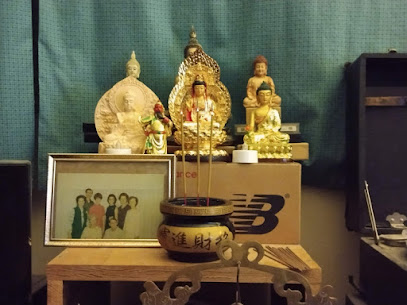
SOUVENIR
Discover unique women's clothing in Los Angeles' Arts District, where style meets creativity and every piece tells a story.
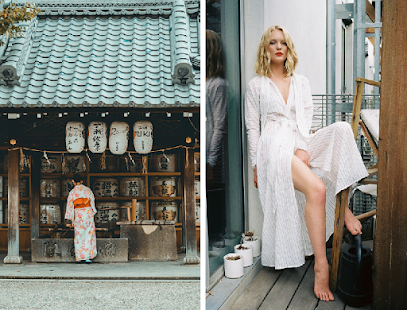
Essential bars & hidden hideouts
Seven Grand
Discover the vibrant nightlife of Los Angeles at Seven Grand, a premier bar with an extensive whiskey selection and live music events.
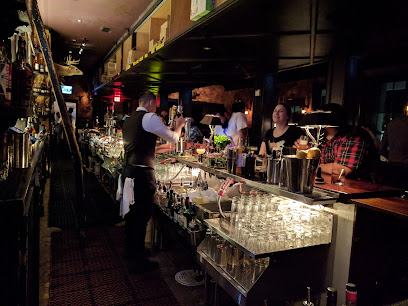
Everson Royce Bar
Discover the vibrant nightlife of Los Angeles at Everson Royce Bar, a trendy spot in the Fashion District known for its creative cocktails and lively atmosphere.

Library Bar
Discover Library Bar, a stylish oasis in Los Angeles offering unique cocktails and gourmet bites in a cozy lounge atmosphere.
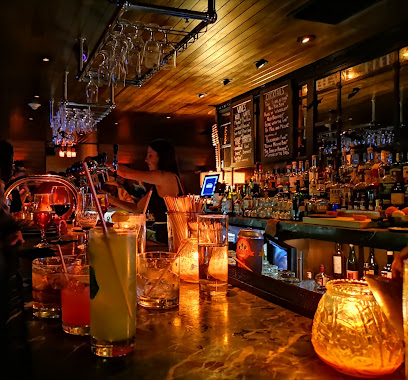
Broken Shaker at Freehand Los Angeles
Discover Broken Shaker in Los Angeles, a rooftop cocktail bar offering creative drinks, stunning skyline views, and a vibrant social atmosphere.
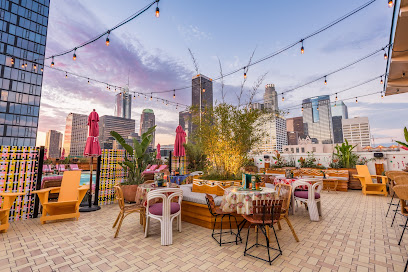
The Varnish
Discover The Varnish in Los Angeles - a cocktail bar blending vintage charm with live music for an unforgettable night out.
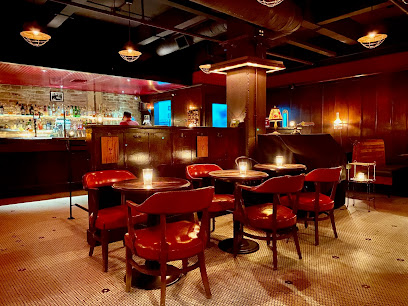
Pattern Bar
Discover the eclectic atmosphere of Pattern Bar, a unique cocktail bar and breakfast spot in Los Angeles' Historic Core.
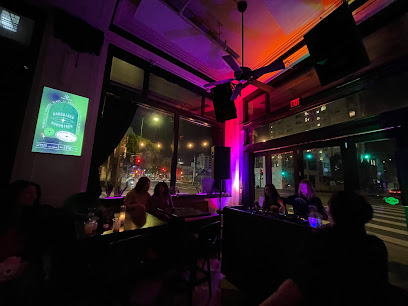
Death & Co Los Angeles
Discover innovative cocktails and a chic atmosphere in the heart of Los Angeles' Arts District at Death & Co.
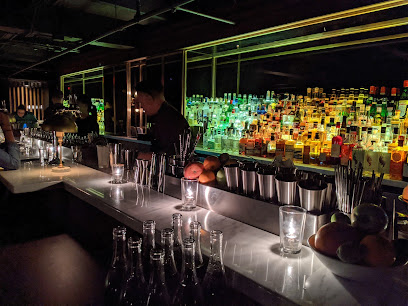
Crane's Bar Downtown
Discover Crane's Bar Downtown, where vibrant sports culture meets a casual dive bar experience in the heart of Los Angeles.
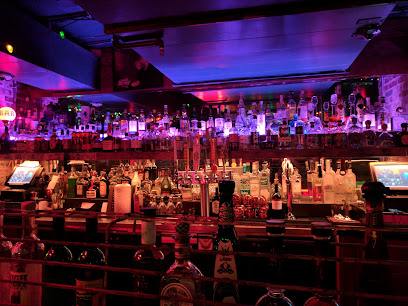
Bar Jackalope
Discover Bar Jackalope in Los Angeles: A cozy bar with an extensive whiskey selection, perfect for unwinding after exploring the city.
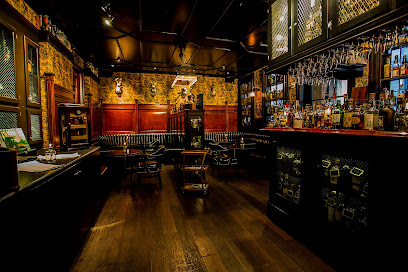
Bar Franca
Discover the vibrant nightlife at Bar Franca in Los Angeles, where expertly crafted cocktails meet an intimate and stylish atmosphere.
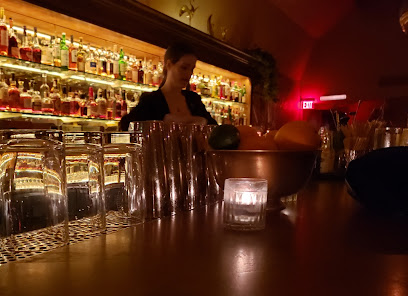
Local Phrases
-
- HelloHola
[oh-lah] - GoodbyeAdiós
[ah-dee-ohs] - YesSí
[see] - NoNo
[no] - Please/You're welcomePor favor/De nada
[pohr fah-vohr/deh nah-dah] - Thank youGracias
[grah-see-ahs] - Excuse me/SorryDisculpe/Lo siento
[dee-skool-peh/loh see-ehn-toh] - How are you?¿Cómo estás?
[koh-moh ehs-tahs] - Fine. And you?Bien. ¿Y tú?
[bee-ehn. ee too] - Do you speak English?¿Hablas inglés?
[ah-blahs een-glays] - I don't understandNo entiendo
[noh ehn-tee-ehn-doh]
- HelloHola
-
- I'd like to see the menu, pleaseQuisiera ver el menú, por favor
[kee-see-eh-rah behr ehl meh-noo, pohr fah-vohr] - I don't eat meatNo como carne
[noh koh-moh kahr-neh] - Cheers!¡Salud!
[sah-lood] - I would like to pay, pleaseMe gustaría pagar, por favor
[meh goos-tah-ree-ah pah-gahr, pohr fah-vohr]
- I'd like to see the menu, pleaseQuisiera ver el menú, por favor
-
- Help!¡Ayuda!
[ah-yoo-dah] - Go away!¡Vete!
[veh-teh] - Call the Police!¡Llama a la Policía!
[yah-mah ah lah poh-lee-see-ah] - Call a doctor!¡Llama a un médico!
[yah-mah ah oon meh-dee-koh] - I'm lostEstoy perdido
[ehs-toy pehr-dee-doh] - I'm illEstoy enfermo
[ehs-toy ehn-fehr-moh]
- Help!¡Ayuda!
-
- I'd like to buy...Quisiera comprar...
[kee-see-eh-rah kohm-prahr] - I'm just lookingSólo estoy mirando
[soh-loh ehs-toy mee-rahn-doh] - How much is it?¿Cuánto cuesta?
[kwan-toh kwehs-tah] - That's too expensiveEsto es demasiado caro
[ehs-toh ehs deh-mah-syah-doh kah-roh] - Can you lower the price?¿Puede bajar el precio?
[pweh-deh bah-har ehl pree-syoh]
- I'd like to buy...Quisiera comprar...
-
- What time is it?¿Qué hora es?
[keh oh-rah ehs] - It's one o'clockEs la una en punto
[ehs lah oo-nah ehn poon-toh] - Half past (10)Media hora (10)
[meh-dee-ah oh-rah (diez)] - MorningMañana
[mah-nyah-nah] - AfternoonTarde
[tahr-deh] - EveningNoche
[noh-cheh] - YesterdayAyer
[ah-yehr] - TodayHoy
[oy] - TomorrowMañana
[mah-nyah-nah] - 1Uno
[oo-noh] - 2Dos
[dohs] - 3Tres
[trehs] - 4Cuatro
[kwah-troh] - 5Cinco
[seen-koh] - 6Seis
[sehs] - 7Siete
[syeh-teh] - 8Ocho
[oh-choh] - 9Nueve
[nweh-veh] - 10Diez
[dyez]
- What time is it?¿Qué hora es?
-
- Where's a/the...?¿Dónde está...?
[dohn-deh ehs-tah] - What's the address?¿Cuál es la dirección?
[kwal ehs lah dee-rek-syohn] - Can you show me (on the map)?¿Puedes mostrarme (en el mapa)?
[pweh-dehs mohs-trar-meh (ehn ehl mah-pah)] - When's the next (bus)?¿Cuándo es el próximo (autobús)?
[kwan-doh ehs ehl proh-ksee-moh (ow-toh-boos)] - A ticket (to ....)Un boleto (a ....)
[oon boh-leh-toh (ah ....)]
- Where's a/the...?¿Dónde está...?
History of Downtown Los Angeles
-
Downtown Los Angeles, originally known as El Pueblo de Nuestra Señora la Reina de los Ángeles, was founded in 1781 by a group of Spanish settlers. The city was established as a farming community and was named after the nearby river, which was named for the original Spanish mission. This founding marked the beginning of Los Angeles as a significant settlement in California.
-
The discovery of gold in California in 1848 led to a massive influx of settlers and fortune seekers. Downtown Los Angeles experienced rapid growth as it became a supply center for miners heading to the gold fields. This period saw the construction of new buildings and the establishment of various businesses, laying the groundwork for the city's future economic development.
-
The completion of the Southern Pacific Railroad in 1876 connected Los Angeles to the rest of the country. This development transformed Downtown Los Angeles into a major transportation hub, facilitating trade and the movement of goods. The railroad's arrival spurred population growth and urbanization, leading to the construction of iconic structures like the Union Station.
-
In 1938, a catastrophic flood devastated much of Downtown Los Angeles and surrounding areas, resulting in significant loss of life and property. The flood prompted the construction of an extensive flood control system, including the Los Angeles River channelization. This event highlighted the vulnerabilities of urban development in the face of natural disasters.
-
The late 20th century saw a cultural renaissance in Downtown Los Angeles, marked by the revitalization of historic buildings and the emergence of new cultural institutions. The establishment of venues like the Walt Disney Concert Hall and the Museum of Contemporary Art, along with the development of the Arts District, has made Downtown a vibrant center for arts and culture, reflecting the diverse communities that call the area home.
Downtown Los Angeles Essentials
-
Downtown Los Angeles is conveniently accessible from various neighborhoods in Los Angeles. From Hollywood, you can take the Metro Red Line to Union Station, which is located in Downtown. If you are coming from Santa Monica, the Expo Line will take you directly to the 7th Street/Metro Center station. Those traveling from LAX can use the FlyAway Bus service, which offers direct routes to Union Station. Rideshare services and taxis are also widely available throughout the city.
-
Downtown Los Angeles is well-connected by public transportation. The Metro Rail system, including the Red, Purple, and Blue Lines, provides access to many attractions. Buses are also a reliable option, with numerous routes traversing the area. For a more active option, consider renting a bicycle through LA's bike-share program, Metro Bike Share, which has numerous docking stations throughout Downtown. Walking is also a great way to explore the vibrant streets.
-
While Downtown Los Angeles is generally safe for tourists, it's important to remain vigilant. Areas such as Skid Row have higher crime rates and should be avoided, especially at night. Avoid displaying valuable items and keep your belongings secure. Stick to well-lit and populated areas and be cautious when using your phone in public. Always trust your instincts; if a situation feels uncomfortable, it's best to leave the area.
-
In case of an emergency, dial 911 for police, fire, or medical assistance. The local hospitals, including LAC+USC Medical Center, are equipped to handle emergencies. It is advisable to have travel insurance that covers medical emergencies. Familiarize yourself with the locations of nearby hospitals and urgent care facilities in case of minor health issues.
-
Fashion: Do dress comfortably and casually, suitable for a city environment. Avoid overly revealing clothing, especially in cultural sites. Religion: Do respect the diverse religious practices in the area. When visiting places of worship, dress modestly and observe any specific customs. Public Transport: Do be courteous to fellow passengers and offer your seat to the elderly. Don’t engage in loud conversations or eat on public transport. Greetings: Do smile and greet locals with a friendly 'hello.' Don’t use overly casual language. Eating & Drinking: Do try local eateries and food trucks for authentic cuisine. Don’t waste food; it's considered impolite to leave food uneaten in many cultures.
-
To experience Downtown Los Angeles like a local, spend time in the Arts District, known for its vibrant street art and unique galleries. Visit the Grand Central Market for a taste of local flavors and to mingle with residents. Attend a show at the Walt Disney Concert Hall, an architectural masterpiece. Explore the historic Olvera Street for a glimpse into LA's Mexican heritage. Lastly, take advantage of free walking tours that provide insight into the area's history and culture.
Nearby Cities to Downtown Los Angeles
-
Things To Do in Hollywood
-
Things To Do in Glendale
-
Things To Do in Monterey Park
-
Things To Do in Pasadena
-
Things To Do in Inglewood
-
Things To Do in Burbank
-
Things To Do in Venice Beach
-
Things To Do in Santa Monica
-
Things To Do in Long Beach
-
Things To Do in Anaheim
-
Things To Do in Malibu
-
Things To Do in Santa Clarita
-
Things To Do in Huntington Beach
-
Things To Do in Costa Mesa
-
Things To Do in Irvine













